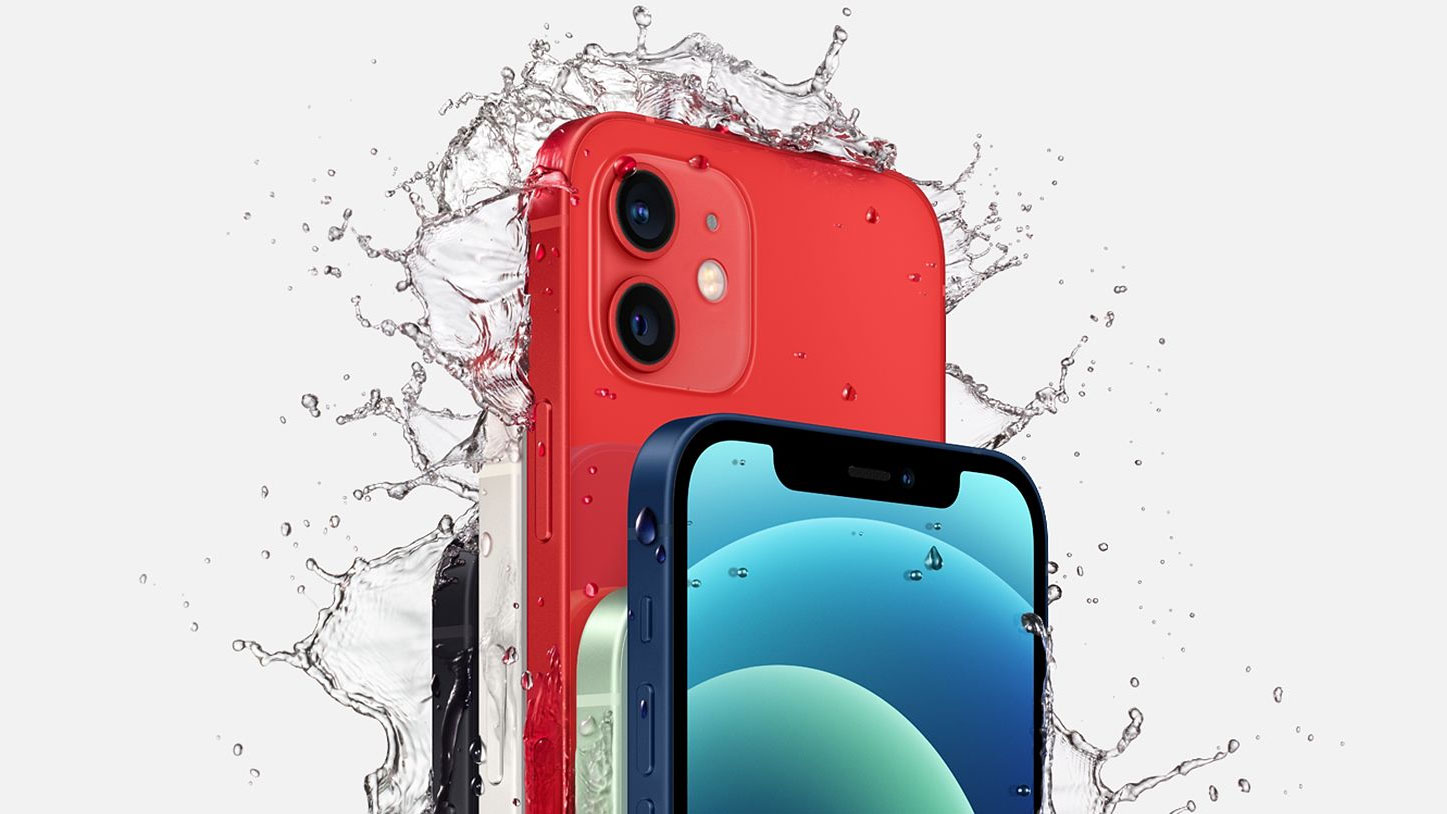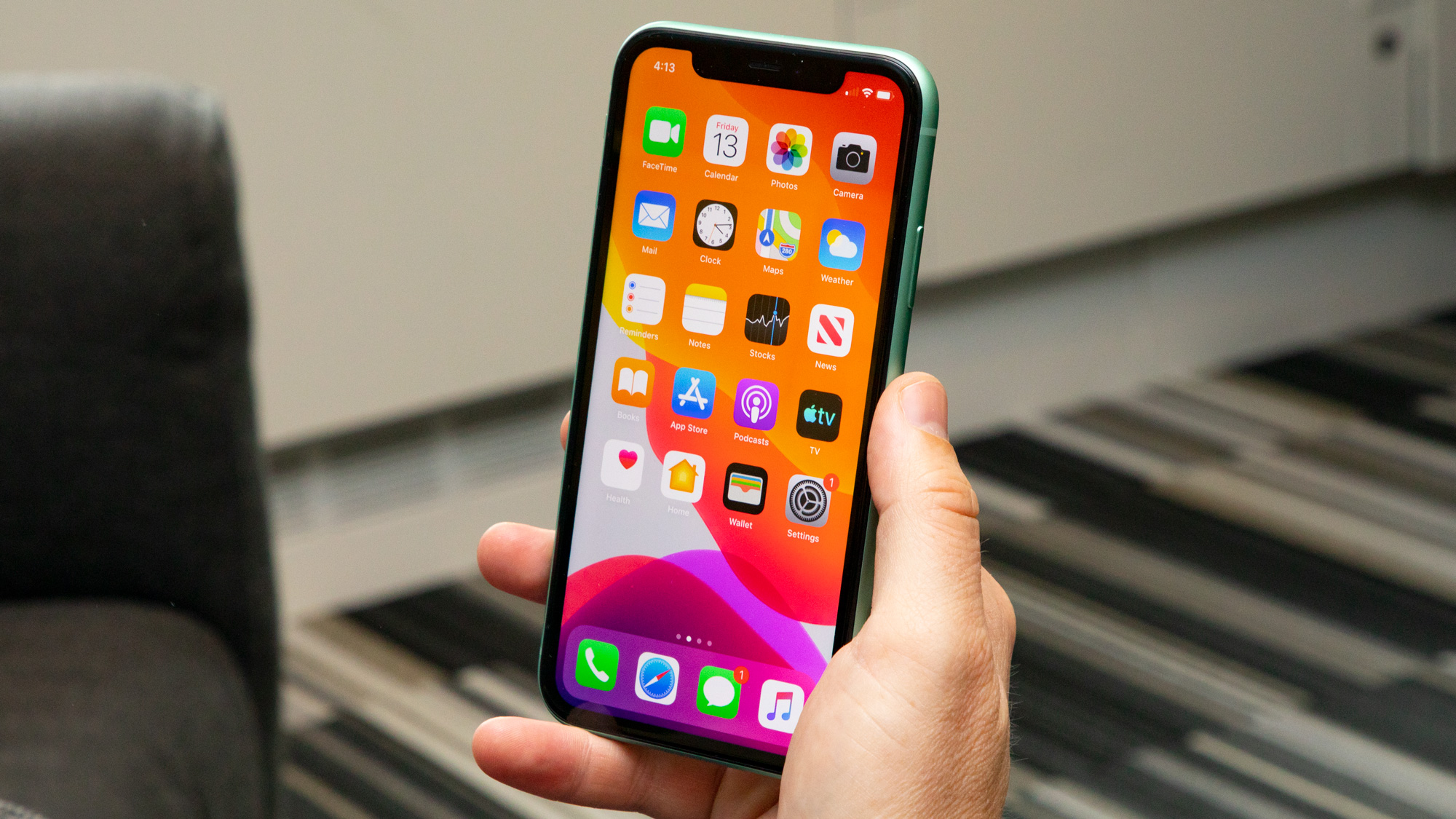iPhone and 5G: every 5G iPhone 12, how it works and all your questions answered
What iPhones support 5G?

With the iPhone 12 range, Apple finally sells 5G phones. It's late to the party (Android handsets have offered it for years), but in many places we're still waiting for networks to catch up, so that's okay.
Whether you have a 5G iPhone, are considering buying one, or are just wondering which models support 5G or what all the fuss is about 5G in the first place, we've got the answers to your 5G questions.
Below we'll detail exactly which iPhone models are 5G-ready, what else you need to take advantage of 5G, whether you need 5G right now, and what 5G even is.
Which iPhones support 5G?
At the time of writing only the iPhone 12 range supports 5G. That means the iPhone 12, iPhone 12 Pro, iPhone 12 Pro Max, and iPhone 12 mini. They all come with 5G as standard, so buy any of them and you'll have a 5G-ready phone, though there are also other aspects to getting 5G, which we'll look at below.
No iPhones launched before the iPhone 12 range support 5G, and that includes the iPhone SE (2020), which was launched earlier in the same year.
That said, we'd expect that going forward all numbered iPhones will have the tech - so we're almost certain that the iPhone 13 range (probably landing in September) will support 5G. It's less clear whether the iPhone SE 3 will or not though, as that will be a relatively budget model.
Wait, so what actually is 5G?
It’s the latest iteration of mobile internet technology, and it’s becoming a reality across a lot of the world. Many carriers and networks are rolling out 5G technology across the globe, and we’re now seeing it become commonplace in major cities.
Get daily insight, inspiration and deals in your inbox
Sign up for breaking news, reviews, opinion, top tech deals, and more.
You know how your mobile internet appears with a logo at the top of your phone to say either 3G or 4G? That is how your phone shows you the connection you have, and 5G essentially gives you access to faster speeds.
There's a lot more to 5G - for example, it's expected to supercharge infrastructure to make smart cities a possibility - and we've put together an explainer on the technology for you to learn all about 5G.
What else do you need to get 5G?
The first thing you need is a 5G phone as noted above, and if you want an iPhone then that currently means one of the iPhone 12 range. But that's not all, the three main things you need are as follows:
- A 5G-ready phone - the iPhone 12 range is built for this
- A 5G-compatible plan - your current deal with your network or carrier
- Live in a 5G-ready area - or at least be willing to travel to get the connection
We've talked about 5G iPhones, but as for the other requirements, your phone carrier or network will also need to provide 5G. Not all of them do at this time, and the ones that do sometimes ask for more money each month to be able to connect to it.
That said, it's becoming an increasingly standard feature, particularly on major networks. If you have a 5G plan already, you’re one step closer.
With a 5G phone and plan you'll be able to connect to 5G networks, but you still need to be in a 5G coverage area, so the location where you live is perhaps the most important factor when working out if 5G is for you.
If you live far away from a city or major town, it’s unlikely you’ll be able to get access to the technology, as it’s mostly found in built up areas for now. Even then coverage is often patchy.
Some countries have far better access to the tech than others at the moment as well. Check with your provider to see what 5G coverage is like, and whether they actually offer services at this time. Make sure to check the coverage where you live, where you work, and anywhere else you frequently travel.
If you don't have coverage where you'll need it, then it's worth considering whether you even need a 5G phone and plan right now. Of course, coverage is improving all the time, and a 5G phone will be more future-proofed than a 4G one.
What if I don't want 5G?

You can still use 4G networks with the iPhone 12, and if you don't have a 5G-ready plan you won't be stopped from using one of Apple's newest phones.
If you want a 4G-only iPhone 12, that isn't an option. Instead, you may want to look at either the iPhone 11 or one of the other iPhones that the company has released in the last couple of years.
But other than a potentially higher cost there's really no downside to opting for a 5G handset even if you're sticking with 4G, and the iPhone 12 range has plenty of other upgrades you might appreciate, including more power, better cameras, and MagSafe support.
- Best iPhone: which is for you?
What technology does the iPhone 12 use?
There is both sub-6 and mmWave technology in US versions of the iPhone 12 range. For the average person, that won't mean much but it largely means that it'll be compatible with most carriers' networks.
For example, in the US, provider Verizon exclusively uses mmWave technology (which is incredibly powerful and potentially offers higher speeds than sub-6, but doesn't work as well over long distances, so it's best in cities).
However, most networks (including those in the UK) currently opt for sub-6 technology. Outside the US, the iPhone 12 range is only compatible with sub-6 5G networks, presumably because that's what most networks use.
Still, Apple using both technologies in US models allows the phone to be compatible with 5G networks around the world, while iPhone 12 models bought elsewhere will be slightly more limited.
This isn't something you should worry about though, since unless you're planning to use your iPhone 12 on Verizon (which will sell you an mmWave model anyway), being stuck with sub-6 should make no difference.
What does Smart Data Mode do?
If there's a downside to 5G it's that it can drain your phone's battery faster than a 4G connection, but the iPhone 12 range has a partial solution to that problem, dubbed Smart Data Mode.
This mode - which is available on all iPhone 12 models and active by default - will switch from 5G down to 4G when 5G speeds won't provide a noticeably better experience.
In practice, that seems to mean that your phone will be connected to 5G (where available) much of the time when you're actively using it (essentially when the screen is on), or when you're doing a big download, but will switch to 4G when the phone is idle or doing less tasking background activities.
If you'd prefer you can turn this mode off and force the phone to either always use 5G when possible, or always top out at 4G, but for most people we'd think Smart Data Mode will strike a good balance.
For what it's worth, in our own tests we found that the iPhone 12 Pro's battery life is reduced by around 15-20% when exclusively using 5G, which is quite significant, and Smart Data Mode can prevent some of that loss.
Will 5G be more popular because of the iPhone?
It's almost a certainty that Apple adopting 5G connectivity will improve the technology for everyone. Carriers and providers will now focus on the technology more because of the huge install base, and that will improve connectivity for all those who want 5G.
Ben Wood, Chief of Research at CCS Insight, says, "Although 5G devices have been available from pretty much every other smartphone-maker for over a year, there's a strong argument that this line-up of 5G-enabled iPhones will be the market-maker for the technology.
"Inevitably, the iPhone 12 will mark the real start of 5G for the consumer mass market."
James is the Editor-in-Chief at Android Police. Previously, he was Senior Phones Editor for TechRadar, and he has covered smartphones and the mobile space for the best part of a decade bringing you news on all the big announcements from top manufacturers making mobile phones and other portable gadgets. James is often testing out and reviewing the latest and greatest mobile phones, smartwatches, tablets, virtual reality headsets, fitness trackers and more. He once fell over.
